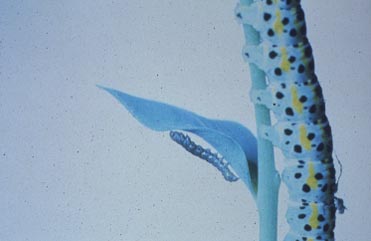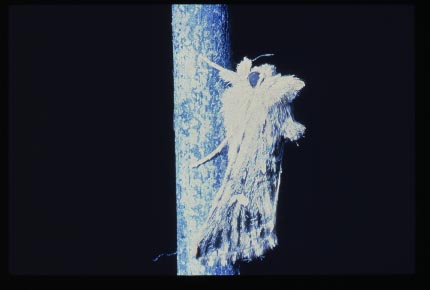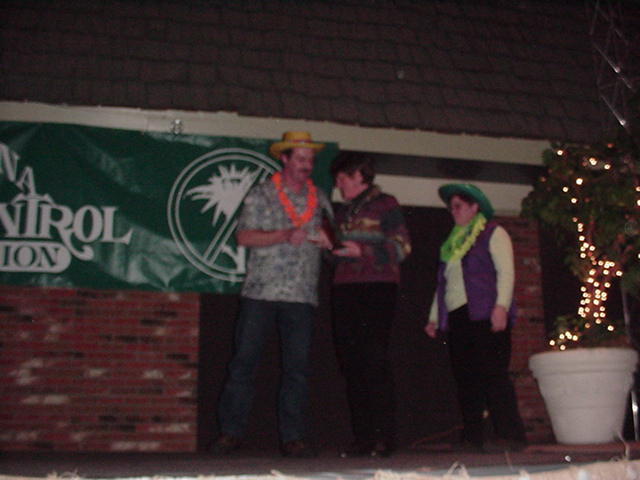- Mass Rearing Calophasia lunula
(Hufnagel)
(Lepidoptera: Noctuidae)


- Left: Calophasia lunula larvae on Dalmatian toadflax.
2nd instar on left and 5th instar on right.
Right: Calophasia lunula adult moth.
Photo's from slide show: Biological Control of Noxious Weeds, by Reeves Petrof.
Picture links- slow downloads:
larvae
pupae
removing pupa from cocoon
cage set up1- for adults to lay eggs [2] [3]
collecting small larvae from cage
Jefferson Valley Conservation Dist. Tour 10-99
Whitehall Students With Larvae
Calophasia can be reared and released on both Dalmatian and yellow toadflax. The larvae defoliate (feed on the foliage of) the plant. The adult moths are nectar feeders and cause no damage to the plant.
Some ideas:
1. You can mass rear (raise many) for release (as an individual or a group such as 4H).
2. You can mass rear these in a classroom setting.
3. You can rear smaller numbers as a demonstration project, fair or science fair project, or an individual student project.
What you need:
1. The insect.
2. A large source of Dalmatian and/or yellow toadflax to feed the larvae.
3. Rearing equipment and labor.
4. Release sites.
How to rear them:
The insect:
Calophasia lunula are established in a number of sites in Western Montana (for instance around the Missoula, MT area). You can call your county extension agent and/or county weed supervisor and request the permission to collect larvae from the nearest location of establishment. Be sure you have permission to collect from all involved in this site!!!!
We suggest that you hand pick 100-300 larvae. The larvae can usually be found clinging to and feeding on toadflax plants from mid May to late July. Look for feeding damage (defoliation of the stems) and the black and yellow larvae. Place the larvae in glass, plastic or paper containers with some foliage. Be careful not to let them over heat (cook) in the sunlight. Transport them in a cooler with an ice pack (not directly touching the container). Have an adequate amount of foliage within the container for the larvae to spread out and feed on. Keep the density low in the containers as the larvae are quite space competitive and the larger larvae will nip and stress, injure or kill the smaller larvae. They can be stored in this manner for several days in a refrigerator or cooler.
Attempting to collect the adults with a sweep net would probably be an exercise in futility as the moths spread out and rest on almost any object in their environment, not just toadflax. They are also very hard to see because of their camouflaged markings.
The food:
C. lunula eat both yellow toadflax (butter and eggs, common toadflax) (Linaria vulgaris (Mill.)) and Dalmatian toadflax (Linaria dalmatica (L.) Miller). They seem to grow equally well when fed on either plant. (1) The larvae eat the leaves and the tender new stems. When they are in the 4th and 5th (last two) instars (an instar is the time between skin sheddings for a larva).
1 meter square cage set up for Calophasia lunula egg production.
Materials needed: 1) two-three healthy toadflax plants much foliage, 2)
20-50 pupae on slightly moist, steril sand, 3) small honey/water solution
(40% honey) container for the moths to feed on, and 4) a timed grow-light
source.


Photo's by WHS students Loni Amos and Jessica Bell, and WHS teacher Todd Breitenfeldt
Sources:
1. Breitenfeldt, Todd, Masters Thesis
back mtwow.org HOME